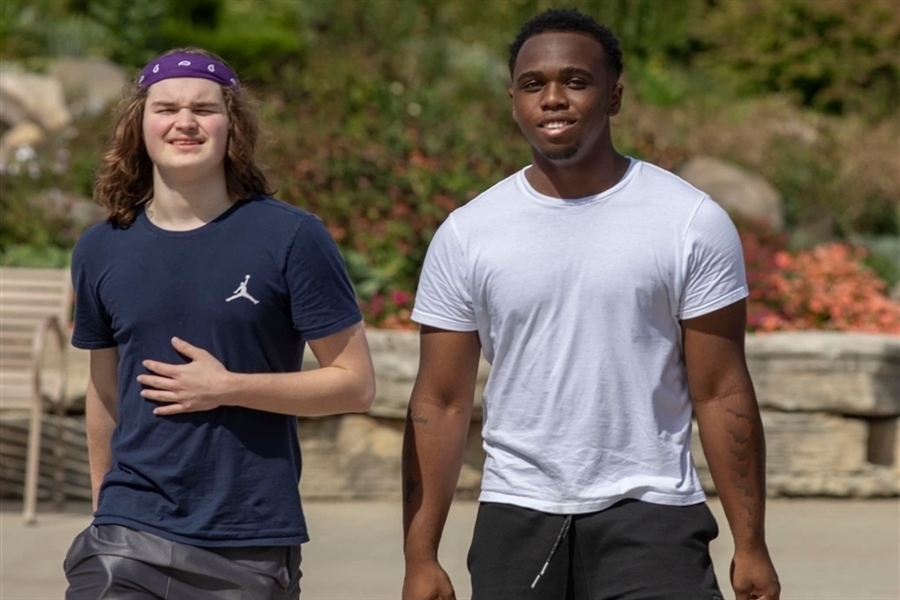Physical Therapy Aide
Become A Certified Physical Therapy Aide
Physical therapy aides work with physical therapists to provide a positive experience for patients undergoing physical therapy treatment. This 100% online course will teach you the concepts, skills and practices to become a certified physical therapy aide. Upon successful completion, students will be eligible to take the American Medical Certification Association's (AMCA) Physical Therapy Technician/Aide certification exam. The course also includes an externship starter kit with resources to secure a position as a physical therapy aide extern.
Questions? Contact us at 855-520-6806
Job Outlook for Physical Therapy Aids
- Physical therapy professionals, especially physical therapy aides, are in high demand. The US Bureau of Labor Statistics (BLS) lists physical therapy assistants and aides among its fastest-growing career areas.
- The BLS projects 27% growth in overall employment for physical therapy support positions between now and 2028. This is over five times faster than overall expected job growth.
- The BLS attributes the growth in demand for physical therapy to the aging Baby Boomer demographic. According to the BLS, Boomers are staying active later in life than previous generations commonly did. As a result, experts anticipate a surge in health concerns as the Boomers reach the age at which heart attacks, strokes and mobility-related injuries become common.
- Physical therapist aides earn around $27,000 per year, on average, according to BLS data. Pay rates for physical therapist aides can vary by location and the type of patients they serve.
- Those who work in nursing or skilled care facilities earn around $35,000 per year. Therapy aide jobs in the offices of physical, occupational and speech therapists and audiologists pay around $25,600 per year.
Physical Therapy Aide FAQs
Physical therapy aides are responsible to support the overall therapy environment. They usually manage the cleanliness and safety of the clinic or work environment and help prepare the equipment for each patient's visit. And they often help patients as they arrive and move around in the treatment facility. Some common duties include:
- Cleaning the treatment areas
- Setting up therapy equipment
- Washing linens
- Helping patients move to or from a therapy area
- Handling clerical tasks, such as answering phones scheduling patients and checking patients into the clinic
Physical therapy assistants work directly with patients to facilitate treatment. They may assist patients with exercise, massage, balance and other forms of therapeutic interventions. Physical therapy assistants often supervise the work of physical therapy aides.
The AMCA exam covers the following areas:
- Patient care
- Practice administration
- Law and ethics
- Patient preparation and positioning
- Anatomy and physiology
- Safety and infection control
- Therapeutic modalities
Each of these areas is critical to patient care, effective treatment and limiting liability for the physical therapist or employer organization.
Changes in health coverage after then Affordable Care Act (ACA) of 2014 have shifted many physical therapy activities from the healthcare setting and into the patient's home. As a result, physical therapy support activities now also take place in the home. The shift to homecare has also opened opportunities for independent and even traveling physical therapy professionals.
Course Objectives
- Prepare to take and pass the AMCA Physical Therapy Technician/Aide certification exam
- Understand the role, responsibilities, and qualifications of the certified physical therapy aide in various healthcare settings
- Build knowledge of human anatomy, functional body movements, and system disorders as they relate to physical therapy
- Identify proper positioning, patient transfers, common exercises, modalities, and medical equipment
- Demonstrate ethical and legal behavior specific to healthcare settings
- Differentiate between tasks appropriate for a certified physical therapy aide and other healthcare professionals
Prerequisites
There are no prerequisites to taking this course.
Curriculum
-
THE PHYSICAL THERAPY PROFESSION
-
MEDICAL TERMINOLOGY
-
ORGANIZATION OF THE HUMAN BODY
-
PRINCIPLES OF PATHOLOGY AND ITS TREATMENT
-
INFECTION CONTROL
-
BODY MECHANICS
-
POSITIONING AND DRAPING PATIENTS
-
TRANSFERRING PATIENTS SAFELY
-
WHEELCHAIR BASICS
-
PRESSURE ULCERS
-
NORMAL AND ABNORMAL GAIT
-
AMBULATION AIDS
-
AMBULATION RELATED ACTIVITIES
-
THE SKELETAL SYSTEM
-
THE MUSCULAR SYSTEM
-
TREATMENT OF THE SKELETAL AND MUSCULAR SYSTEMS: EXERCISE
-
TREATMENT OF THE SKELETAL AND MUSCULAR SYSTEMS: PHYSICAL AGENTS
-
THE CARDIOVASCULAR AND RESPIRATORY SYSTEMS
-
THE NERVOUS SYSTEM
-
TREATMENT OF THE CARDIOVASCULAR, RESPIRATORY, AND NERVOUS SYSTEMS
-
THE REST OF THE ORGAN SYSTEMS
-
COMMUNICATION IN THE PT FACILITY
-
RECORDS AND CHARTING
-
LEGAL AND ETHICAL ISSUES
-
YOUR CAREER JOURNEY (OPTIONAL LESSON)
Instructor
Holly Trimble
Holly Trimble earned a bachelor's degree in physical therapy from the University of Colorado, a master's degree in pediatric physical therapy from Boston University, and a master's degree in biology from the University of Nebraska at Kearney. After working as a physical therapist for many years, Trimble transitioned into teaching. She has lectured on health-related topics to all age groups and works as an adjunct instructor of anatomy and physiology. She received an Adjunct Faculty Excellence Award and is the author of "College Success Now!"
Registration and Enrollment
This course is 100% online. Start any time.




